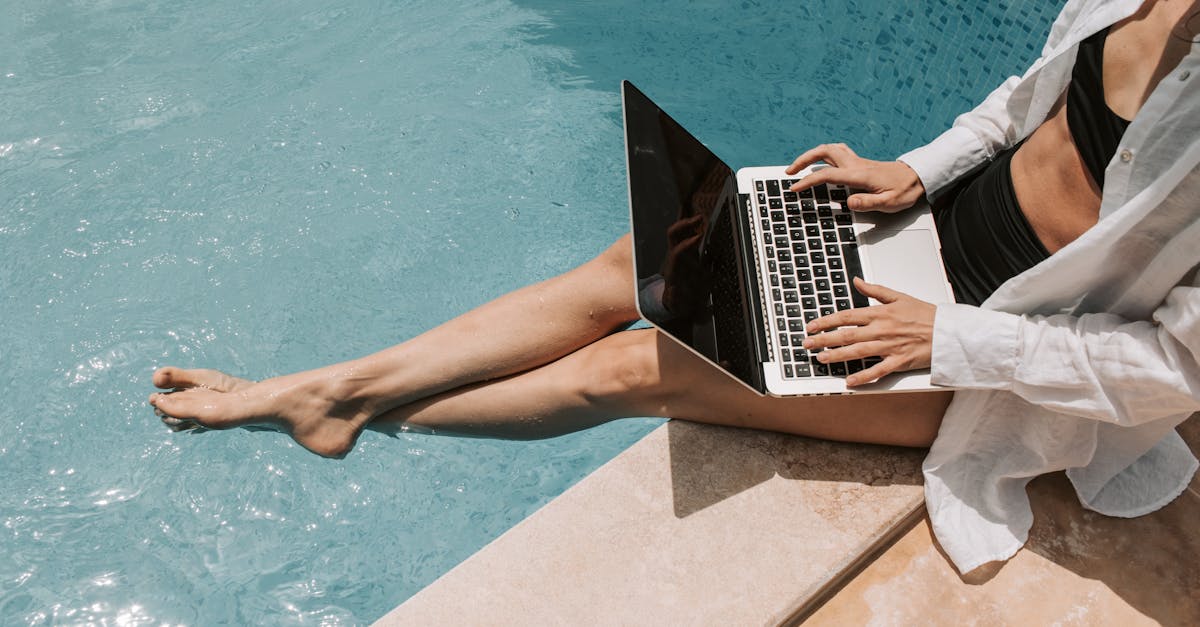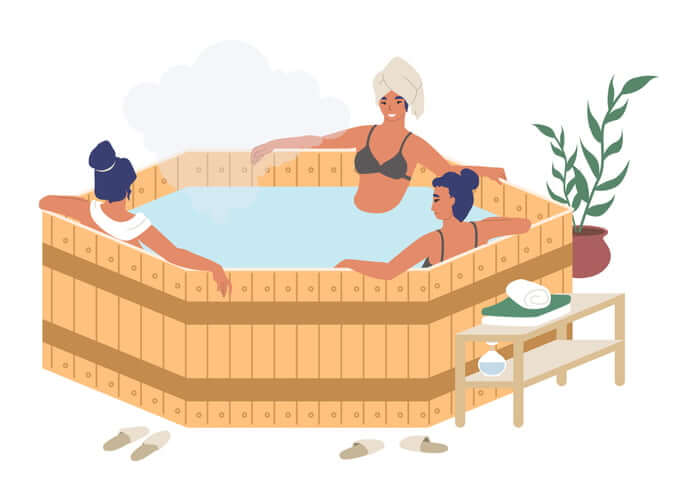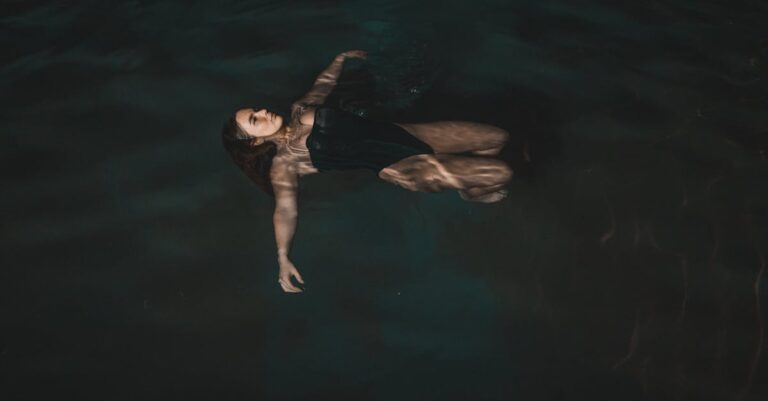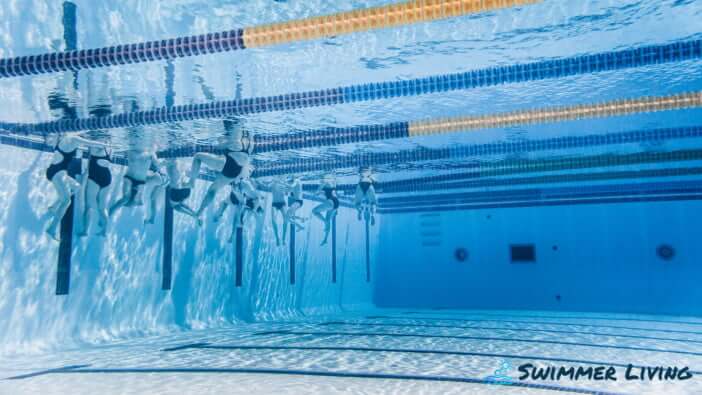11 Poolside Comfort Tips That Beat Summer Heatwaves Like a Pro
Beat the heat with our essential guide to poolside comfort! Discover expert tips on shade solutions, furniture selection, cooling systems, and safety measures for the perfect summer oasis.
When temperatures soar and heatwaves strike lounging by the pool becomes both a luxury and a necessity. Yet without proper preparation your poolside retreat can quickly turn from refreshing to uncomfortable especially during those scorching summer days.
Creating the perfect poolside oasis isn’t just about having a place to cool off – it’s about crafting a comfortable environment that lets you enjoy those long summer days safely and stylishly while beating the heat. You’ll discover practical solutions that transform your pool area into a cool sanctuary where you can relax and unwind even during the most intense heatwaves.
Disclosure: As an Amazon Associate, this site earns from qualifying purchases. Thank you!
Understanding Heat Safety Around Your Pool
Your pool can be a refreshing escape during extreme heat but requires careful attention to safety measures.
Recognizing Signs of Heat-Related Illness
Watch for these crucial warning signs of heat stress when swimming or lounging poolside:
- Feel dizzy or lightheaded: Take a break in a shaded area
- Experience muscle cramps: Hydrate with electrolyte-rich drinks
- Notice excessive sweating: Move to a cooler spot immediately
- Develop a headache: Seek indoor air conditioning
- Show confusion or disorientation: Get medical help right away
Stay alert to these symptoms in yourself and others especially when temperatures exceed 90°F (32°C).
Monitoring Pool Temperature Levels
Keep your pool at optimal temperatures to ensure safe swimming conditions:
| Pool Type | Ideal Temperature Range | Max Safe Temperature |
|---|---|---|
| Recreation | 78-82°F (26-28°C) | 88°F (31°C) |
| Lap Swimming | 77-81°F (25-27°C) | 85°F (29°C) |
| Children’s Pool | 82-86°F (28-30°C) | 87°F (31°C) |
Test water temperature daily during heatwaves using a pool thermometer. When temperatures rise above recommended levels use pool chillers or run circulation systems overnight to cool the water. Avoid swimming if pool water exceeds maximum safe temperatures.
Creating Shaded Areas for Maximum Comfort
Strategic shade solutions are essential for maintaining comfortable temperatures in your pool area during intense heatwaves while protecting you and your family from harmful UV rays.
Installing Retractable Awnings and Umbrellas
Transform your poolside space with versatile retractable awnings that extend up to 12 feet from your house providing instant shade coverage. Choose UV-resistant fabrics like Sunbrella that block 98% of harmful rays while allowing airflow. Install large cantilever umbrellas (9-13 feet) with weighted bases in key lounging areas. Consider motorized options with wind sensors that automatically retract during strong gusts exceeding 25 mph for safety.
Building Permanent Shade Structures
Invest in durable pergolas or pavilions constructed from weather-resistant materials like cedar aluminum or vinyl. Add retractable shade canopies between support beams for flexible coverage options. Install poolside cabanas (8×10 feet minimum) with weather-resistant curtains for private shaded refuge. Consider louvered roof systems that adjust to changing sun positions throughout the day providing precise shade control.
Adding Natural Shade with Strategic Landscaping
Plant fast-growing shade trees like Red Maples or Crepe Myrtles 15-20 feet from the pool’s edge to avoid leaf debris. Create living walls using climbing vines like Star Jasmine on lattice screens for vertical shade. Position large decorative planters with tall ornamental grasses or banana plants around seating areas. Use dwarf varieties of trees and shrubs to minimize root interference with pool structures while maximizing shade coverage.
Choosing the Right Poolside Furniture
Selecting appropriate outdoor furniture is crucial for creating a comfortable poolside retreat during intense heat while ensuring durability and functionality.
Selecting Heat-Resistant Materials
Choose furniture made from weather-resistant materials like powder-coated aluminum cast aluminum or marine-grade polymer. These materials won’t absorb heat like traditional metal furniture preventing burns on hot days. Teak and cedar offer natural heat-resistant options that stay relatively cool even in direct sunlight. Avoid dark-colored metals plastic furniture or materials without UV protection as they can become uncomfortably hot and deteriorate quickly under intense sun exposure.
Incorporating Cooling Fabric Technologies
Invest in furniture with advanced cooling fabrics like Sunbrella or Textilene mesh. These materials feature moisture-wicking properties and breathable weaves that help maintain comfortable seating temperatures. Quick-dry cushions with UV-resistant covers prevent water retention and resist fading. For optimal cooling choose light-colored fabrics with ventilated designs that reflect sunlight and allow air circulation through the material.
Arranging Furniture for Optimal Airflow
Position your poolside furniture to maximize natural air movement and create cooling cross-breezes. Place chaise lounges and seating groups at least 3 feet apart to prevent heat buildup. Arrange conversation sets in a circular pattern rather than against walls to promote air circulation. Create designated pathways between furniture groupings to funnel cooling breezes and maintain comfortable traffic flow around the pool area.
Setting Up a Refreshment Station
Keep cool drinks and snacks within arm’s reach by creating an organized poolside refreshment area that enhances your swimming experience while promoting hydration during hot days.
Installing a Mini Refrigerator
Position a weather-resistant mini fridge under a covered area within 15 feet of your pool for easy access to cold beverages. Choose an energy-efficient model rated for outdoor use with at least 3.2 cubic feet of space. Install it on a stable platform or cart with wheels for mobility and protect it from direct sunlight using an overhang or umbrella. Consider models with child locks and GFCI protection for added safety near water.
Creating a Hydration Center
Set up a designated drink station with a variety of beverage options including water infused with fresh fruits mint or cucumber. Stock insulated dispensers with electrolyte drinks sports beverages and ice-cold water. Include reusable cups with secure lids koozies and unbreakable drinkware made from acrylic or stainless steel. Keep a supply of clean straws and cup holders designed to prevent spills on pool furniture.
Organizing Cooling Snacks
Store ready-to-eat refreshments in sealed containers to maintain freshness and prevent insects. Pack individual portions of frozen grapes watermelon chunks and citrus slices in reusable containers. Include protein-rich snacks like nuts trail mix and granola bars for sustained energy. Use ice packs and insulated containers to keep perishable items fresh and arrange snacks in easy-to-grab sections on a weatherproof serving cart or table.
Installing Cooling Systems and Misting Features
Transform your poolside into a refreshing oasis with strategic cooling solutions that combat intense summer heat.
Adding Pool Deck Misters
Install high-pressure misting systems along your pool deck’s perimeter to create a cooling microclimate. Position nozzles every 8-10 feet at a height of 8 feet to ensure optimal coverage without creating slippery surfaces. Choose stainless steel misting nozzles with 0.5mm openings that produce ultra-fine water particles capable of reducing ambient temperatures by 10-15°F. Connect the system to a programmable timer to activate during peak heat hours while conserving water.
Incorporating Cooling Fans
Mount high-velocity outdoor fans strategically around your pool area to generate cooling airflow. Install 18-24 inch marine-grade ceiling fans under covered areas or attach pedestal fans with oscillating features to pool deck posts. Select models with variable speed settings & weather-resistant motors rated for outdoor use. Position fans 6-8 feet above ground level angled slightly downward to maximize air circulation without creating excessive water ripples.
Installing Portable Air Coolers
Deploy evaporative air coolers around seating areas for targeted cooling relief. Choose units with 500-700 square feet of cooling capacity & built-in UV protection for outdoor durability. Place coolers on stable elevated platforms 2-3 feet off the ground to prevent water damage & ensure proper airflow distribution. Select models with large water reservoirs offering 8+ hours of continuous operation & equipped with wheels for easy repositioning throughout the day.
Maintaining Proper Pool Water Chemistry
During heatwaves, proper pool chemistry becomes crucial for maintaining a safe and enjoyable swimming environment. High temperatures can significantly impact water quality and chemical balance.
Balancing pH Levels During Heat
Monitor your pool’s pH levels daily during heatwaves as heat accelerates chemical reactions. Keep pH between 7.4 and 7.6 for optimal comfort and effectiveness. Test the water each morning before peak heat using digital meters or test strips for accuracy. Add pH increaser or decreaser in small amounts adjusting for the increased evaporation rate that concentrates chemicals. Remember that high temperatures can cause pH levels to fluctuate more dramatically than usual.
Managing Chlorine Levels
Maintain free chlorine levels between 1-3 parts per million (ppm) during hot weather. Add chlorine during evening hours to prevent rapid dissipation from UV rays. Use stabilized chlorine products containing cyanuric acid to extend chlorine effectiveness. Install an automatic chlorinator to maintain consistent levels throughout heat spells. Check chlorine levels twice daily as heat accelerates chlorine depletion requiring more frequent adjustments.
Preventing Algae Growth
Combat algae growth by shocking your pool weekly during heatwaves using calcium hypochlorite. Run your pool pump continuously during peak heat hours to maintain circulation. Brush pool walls daily to prevent algae attachment points. Add algaecide weekly as a preventive measure focusing on areas with poor circulation. Consider using phosphate removers to eliminate algae food sources especially when temperatures exceed 90°F (32°C).
Implementing Safety Measures for Hot Days
Safety protocols become crucial during extreme heat to protect swimmers and ensure everyone enjoys the pool responsibly.
Establishing Pool Break Schedules
Set mandatory 15-minute breaks every hour when temperatures exceed 90°F (32°C). Schedule these breaks between 10 AM and 4 PM when UV exposure peaks. Use break times to rehydrate drink water check vital signs and cool down in shaded areas. Install a weather-resistant digital timer near the pool to track swimming intervals and post a visible break schedule that shows designated rest periods for different age groups.
Providing Emergency Equipment
Install a poolside emergency station with essential rescue equipment within 10 feet of the water. Stock it with:
- A Coast Guard-approved reaching pole
- A ring buoy with 50 feet of rope
- A rescue tube or flotation device
- An automated external defibrillator (AED)
- Emergency phone or weather-resistant communication device
Mount these items on a clearly marked weather-resistant storage unit with quick-release mechanisms.
Setting Up First Aid Stations
Create a dedicated first-aid zone under a shaded area with:
- A waterproof first aid kit containing burn cream sunburn relief gel bandages
- Instant cold packs and instant hot packs
- Emergency contact information and nearest hospital directions
- Heat exhaustion treatment supplies including oral rehydration solutions
- A clipboard with incident report forms
Store supplies in a weather-resistant container and check contents monthly for replacements.
Adding Comfort-Enhancing Accessories
Transform your poolside experience with strategic accessories that maximize comfort and functionality during intense heat.
Using Pool Floats and Loungers
Invest in premium floating loungers designed with cooling mesh materials and ergonomic headrests for extended comfort. Select UV-resistant options like the Frontgate Resort Pool Float or Aqua Comfort Water Hammock that feature cup holders and moisture-wicking surfaces. Position multiple floats strategically around the pool to create floating relaxation zones while maintaining clear swimming lanes. For ultimate luxury add inflatable floating islands with built-in canopies that accommodate multiple users.
Installing Pool Temperature Monitors
Mount digital pool thermometers with wireless displays to track water temperature fluctuations throughout the day. Choose models like the Inkbird IBS-P01R that offer smartphone connectivity and alert notifications when temperatures exceed 85°F (29°C). Install multiple sensors at different depths for accurate readings and position the display unit in a shaded area near your seating zone. Select monitors with additional features like humidity tracking and weather forecasting capabilities.
Adding Cooling Towel Stations
Create dedicated cooling stations with specialized microfiber towels that activate when wet and maintain temperatures up to 30 degrees cooler than air temperature. Stock rolling storage carts with PVA cooling towels neatly arranged in sealed containers filled with ice water. Include spray bottles for easy rewetting and labeled bins for used towels. Position stations in shaded areas near seating zones and replenish ice water hourly during peak heat periods.
Planning Daily Pool Maintenance
Scheduling Regular Water Testing
Test your pool water every morning during heatwaves to maintain optimal chemical balance. Use a digital testing kit to check pH chlorine calcium hardness and stabilizer levels before the day heats up. Create a morning checklist that includes:
- Testing free chlorine (1-3 ppm)
- Measuring pH (7.4-7.6)
- Checking total alkalinity (80-120 ppm)
- Recording water temperature
- Documenting results in a pool log
Maintaining Filtration Systems
Run your pool filter system longer during extreme heat to prevent algae growth and maintain water clarity. Set your pump to operate during the coolest hours between 2 AM and 6 AM for maximum efficiency. Keep these filtration priorities in mind:
- Clean skimmer baskets daily
- Backwash the filter weekly
- Inspect pump seals for leaks
- Monitor pressure gauge readings
- Clear debris from pump strainer
- Skim surface debris morning and evening
- Vacuum the pool floor every other day
- Brush walls tiles and steps daily
- Clean waterline tiles weekly
- Remove any visible algae spots immediately
Maximizing Comfort for Extended Pool Sessions
Creating your perfect poolside retreat during intense heat requires thoughtful planning and strategic implementation. By incorporating proper shade solutions customized furniture and advanced cooling systems you’ll transform your pool area into a refreshing sanctuary that lets you enjoy countless hours outdoors.
Remember that safety always comes first. With the right combination of temperature monitoring emergency preparations and consistent maintenance you’re well-equipped to handle even the most challenging heatwaves. Your enhanced poolside space will serve as a cool haven where family and friends can safely gather to make lasting summer memories.
Take action now to implement these comfort-enhancing strategies and you’ll be ready to beat the heat while maximizing your pool’s potential as the ultimate summer escape.




